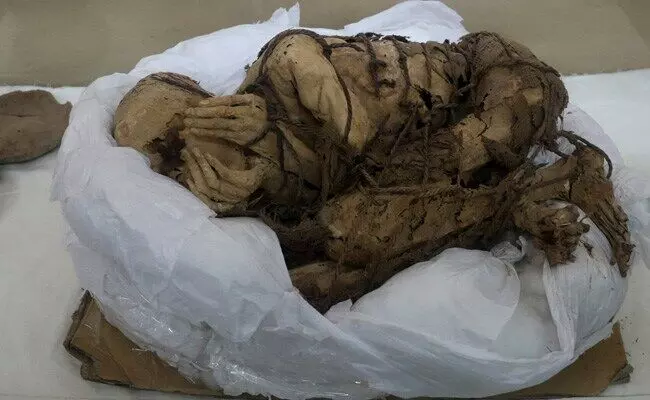
Kids and adults sacrificed 1,200 years ago unearthed in Peru
text_fieldsLima: Archaeologists in Peru dug up the other day some 1,200-year-old remains of children and adults. The remains were of eight children and 12 adults being unearthed an underground tomb at the pre-Incan Cajamarquilla complex east of Lima.
In November, a team from Peru's San Marcos University found at the site an ancient mummy thought to be a VIP wrapped with ropes, in a fetal position.
The bodies—some mummified, while others reduced to skeletons—were seen wrapped up in layers of textiles as a nod to pre-Hispanic ritual.
Archaeologist Pieter Van Dalen said that the bodies might well be sacrificed to accompany the main mummy.
"For them, death was not the end, but rather a transition to a parallel world where the dead lived," Van Dalen told a news conference. "They thought that the souls of the dead became protectors of the living."
Van Dalen found the burial pattern reminiscing the tomb of the Lord of Sipan. Lord of Sipan, ruler from 1,700 years ago, was found buried along with sacrificed children and adults.
"This is precisely what we think and propose in the case of the mummy at Cajamarquilla, which would have been buried with these people," he said. "As part of the ritual, evidence of violence has been found in some of the individuals."
Yomira Huaman, another expert part of the team, reported of other funeral items found including musical artifacts such as the "zampona," .
The wind instrument was of Andean origin with several wooden tubes in the form of flutes.
"Our investigations suggest the mummy of Cajamarquilla would be a man of approximately 35 years. This character did not have any organs, meaning he was eviscerated after death," she said.
Peru is home to hundreds of archaeological sites dating back to pre and post Inca Empire.
Inca Empire dominated the southern part of the continent 500 years ago, ranging from southern Ecuador and Colombia to central Chile.
























